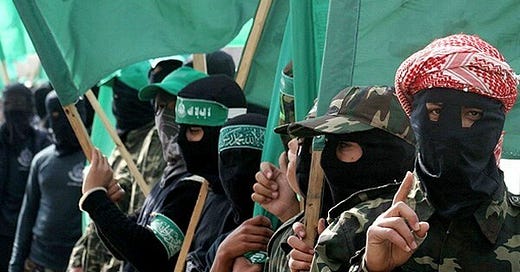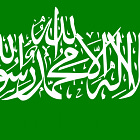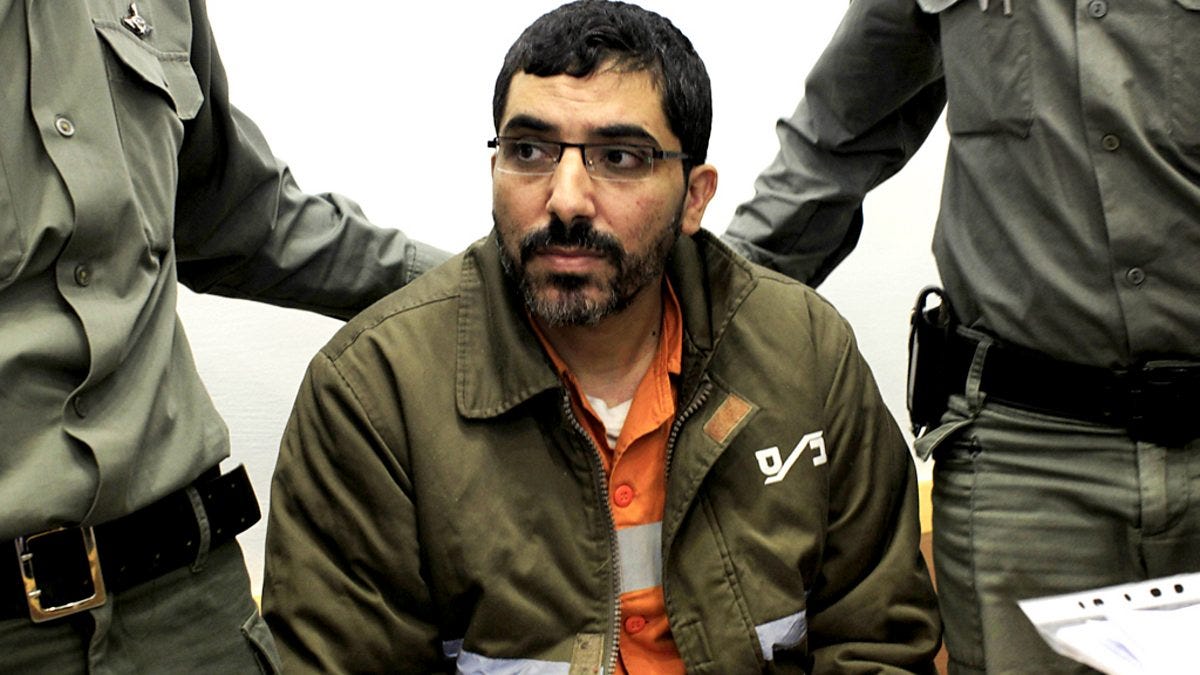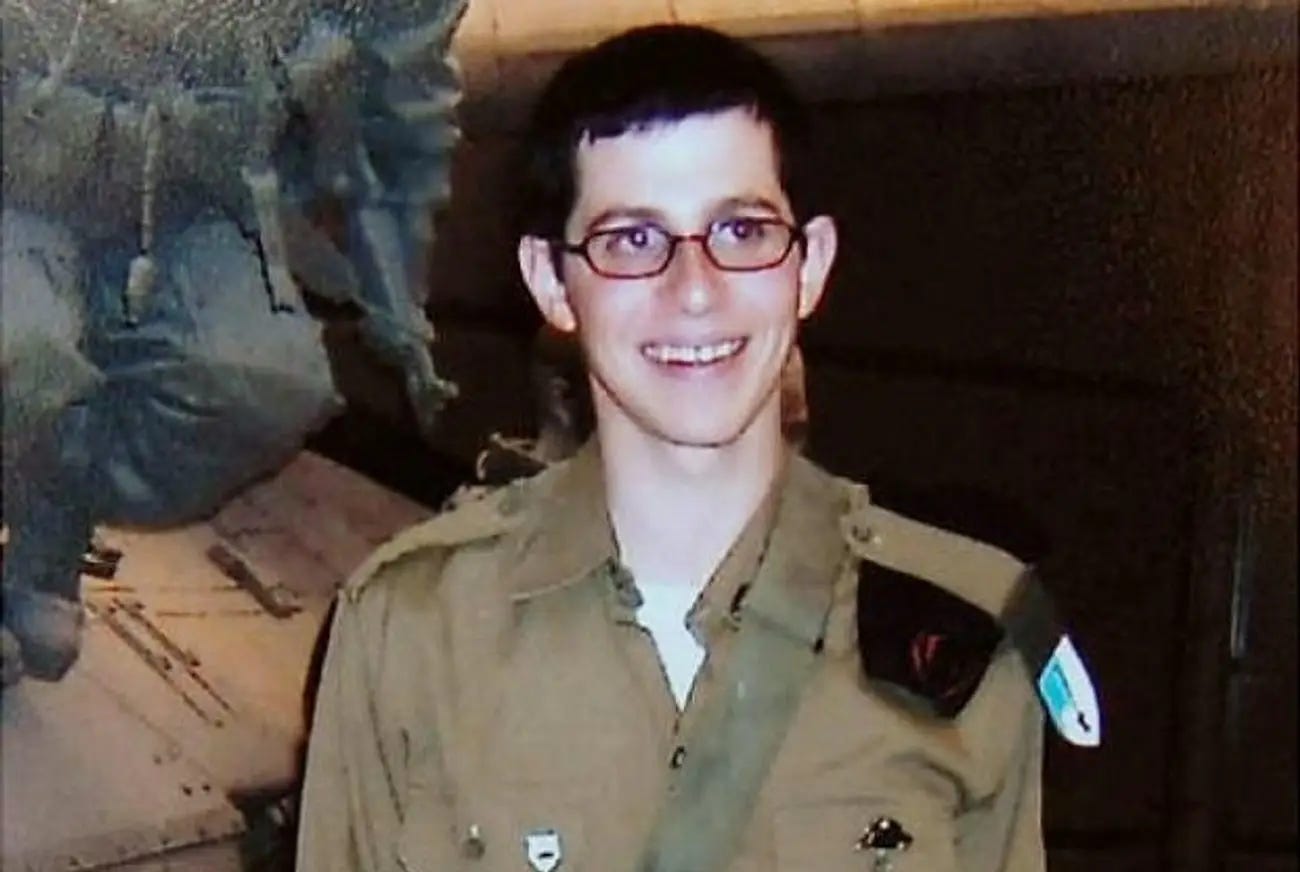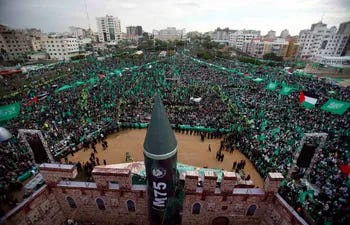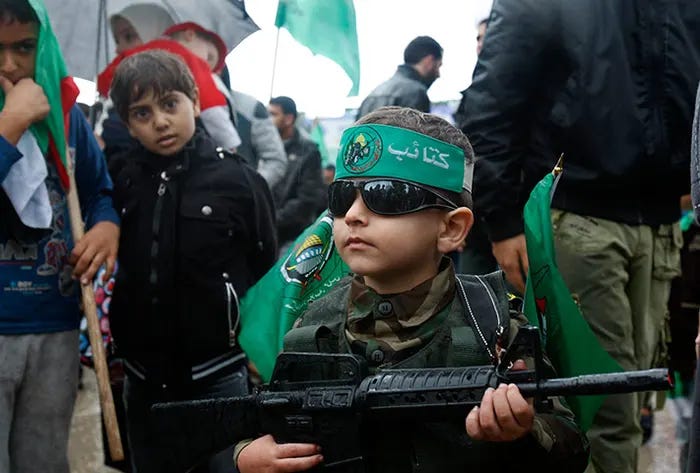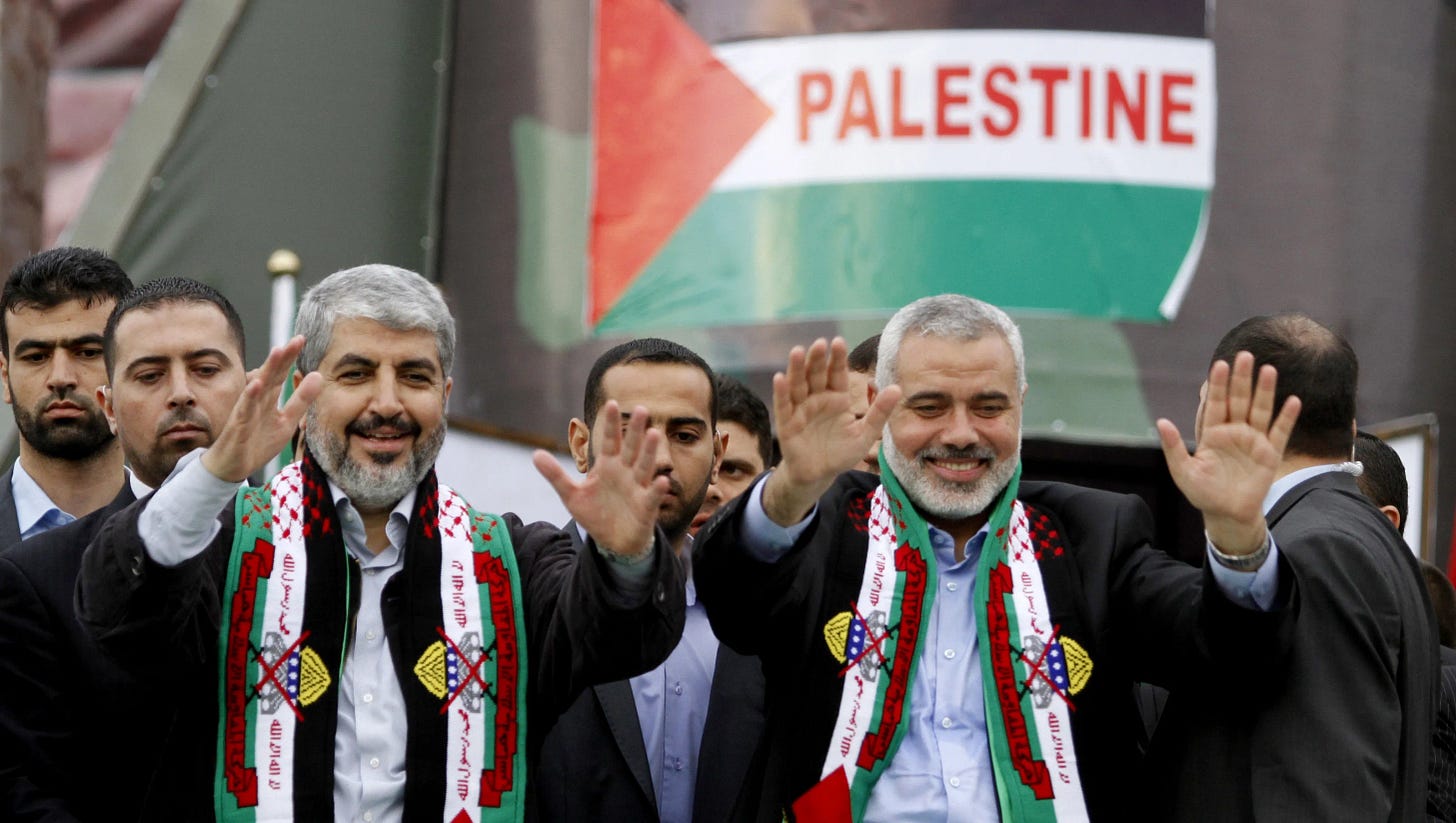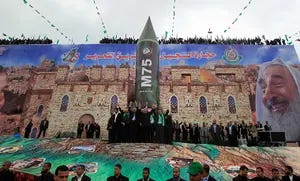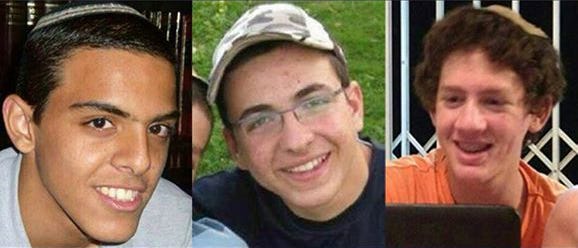In my last post, I covered the history of Hamas from 2006 to 2009, click below to read it. This time I will cover 2010 to 2014.
2010
On January 19, in Dubai, the Mossad manages to get inside the hotel room of senior Hamas commander Mahmoud al-Mabhouh and kill him. He was responsible for the kidnapping and murder of two Israeli soldiers in 1989 as well as purchasing arms from Iran for use in Gaza.
On February 1, the Popular Resistance Committees, a group with close ties to Hamas, launches ten 55 gallon drums packed with explosives into the Mediterranean Sea, hoping they would float to Israel causing causalities and chaos.
On March 10, the Israeli cabinet approves construction of an additional 1,600 apartments in a large Jewish housing development in northeastern Jerusalem called Ramat Shlomo. The announcement comes during a visit by Vice President Joe Biden which causes the Obama administration to issue a strongly worded condemnation.
On March 26, a team of IDF soldiers cross the border into the Gaza Strip pursuing several people who are seen placing explosive devices near the Israeli border fence. The patrol is ambushed and attacked with mortars and gunfire from inside the Strip. Two IDF soldiers are killed and three are injured, Hamas claim responsibility for the attack.
On June 14, One Israeli policeman is killed and three are injured when Hamas militants open fire on their vehicle on Route 60, south of Hebron.
Before the negotiations between Israel and the Palestinians, (see below), even started, Hamas and Hezbollah announced that they would attempt to torpedo the peace talks. A Hamas-led coalition of 13 Palestinian militant groups, called the Popular Resistance Committees, initiated a violent campaign to disrupt the peace talks between Israel and the PA. The first attack in this effort occurred on August 31, when a car driven by Hamas militants pulled along side a car containing four Israelis who were driving on Route 60 near the Kiryat Arba. The militants opened fire, killing the driver and causing the car to go off the road. The attackers then approached the car and shot the occupants in their seats at close range. Two of the murdered people, Yitzhak and Tali Aymes, were from the settlement of Beit Hagai, near Hebron. They were the parents of six children ranging in age from five to 24 and had one grandchild. Tali was also due to give birth to a seventh child any day. Kochava Even Chaim, a teacher in Efrat with an eight-year-old daughter, was killed. Her husband was among the paramedics who responded to the shooting and discovered that one of the victims was his wife. The fourth victim was Avishai Shindler, who had recently moved with his wife to live in Beit Haggai.
On September 1, Rabbi Moshe and Shira Morano, from Ma’ale Efraim in the Jordan Rift Valley, were shot in their car by Palestinian gunmen while driving on Route 60 between the Rimonim Junction and the Jewish community of Kochav Hashachar. The Rabbi was moderately hurt with shrapnel wounds to his legs and a bullet in the shoulder, and his wife had cut and bruises as a result of the vehicle overturning.

After ten months and seven rounds of indirect talks that began in November 2009, US-brokered direct negotiations between Israel and the Palestinian Authority (PA), in Washington DC begin on September 2. The aim of the talks was to forge the framework of a final agreement on a two-state solution, within one year. Although general expectations of success were fairly low. PA President Mahmoud Abbas stated that during the talks, the PA and Israel agreed on the principle of a land swap, with Israel exchanging small parts of its own territory in exchange for border settlement blocs. The issue of the ratio of land Israel would give to the Palestinians in exchange for keeping border settlement blocs was an issue of dispute, with the Palestinians demanding that the ratio be 1:1, and Israel offering less.
On September 12, a second round of peace talks between Israel and the PA concludes in Sharm el-Sheikh, Egypt, with no substantive agreements.
On September 26, the 10-month moratorium in new construction in the West Bank expires. Also on this day, an Israeli couple driving on Route 60 (maybe we should call it the Route of Death?), in the West Bank were fired on by a passing Palestinian vehicle. Both Israelis sustained gunshot wounds to the legs but managed to drive themselves to Soroka Hospital in Beersheba. The woman, who was nine months pregnant gave birth to a healthy baby boy that night.
On September 5, Israeli F-16s launched airstrikes on smuggling tunnels in Gaza. One Palestinian is killed and three are injured.
On September 12, IDF soldiers kill three men approaching the border fence near kibbutz Erez, Hamas claimed the men were farmers. Two days later the IDF kills one and wounds four Palestinian militants after they fire RPGs into Israel.
2011
On February 18, Dirar Abu Seesi the chief engineer for Gaza’s only power plant and also a weapons engineer for Hamas, was travelling by train from Kyiv, Ukraine, his wife’s native country, to visit his brother. Ukrainian security officials removed him from the train and his whereabouts were unknown for some time.
On March 16, in response to a rocket launched from the Strip at Israeli communities in the southern part of Israel, the Israeli Air Force attacked a Hamas training area in the southern part of Gaza City. Three terrorists were killed and three wounded.
On March 20, Israel announced that they were holding Dirar Abu Seesi, in preperation for a trial for charges relating to his activity with Hamas.
On March 23 an explosive device placed in a suitcase on the sidewalk near the Jerusalem International Convention Center complex exploded next to bus number 74. One person was killed and 50 were wounded. Hamas claimed credit for the attack.
On April 4, 2011, Abu Seesi was indicted in the Beersheba District Court, charged with membership in a terrorist organization, attempted murder, conspiracy to commit a crime, production of illegal weaponry, and assistance to an illegal organization. According to the indictment, Abu Seesi was the central developer of the Qassam rocket, among other weapons, was responsible for upgrading older rockets for Hamas and served as the commander of Hamas' Izz ad-Din al-Qassam Military Academy.
On April 7, Hamas launched an anti-tank guided missile from the Gaza side of the border hitting a school bus. The missile hit the bus after all but one of the children had been dropped off. The only remaining passenger, a 16-year-old boy, was critically injured with shrapnel wounds to the head and died from his injuries ten days later. The bus driver was also wounded. Hamas also launched a mortar barrage which was timed to coincide with the arrival of the paramedics, delaying the evacuation of the victims.
April 24, a group of 15 Israeli worshipers entered the West Bank city of Nablus to pray at Joseph’s tomb, without coordinating their visit with the IDF as required by law. After finishing praying, as they were leaving Nablus, their cars came under fire from a PA police jeep. Five Israelis were injured in the attack and the nephew of the Israeli Minister of Culture and Sports was killed.

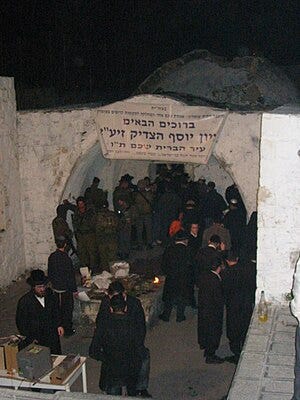
On May 15, demonstrations took place to commemorate Nakba Day. People in the Gaza Strip, the West Bank, Lebanon, Jordan, Egypt and Syria attempted to approach or breach Israel’s boarders. At least a dozen “protestors” were killed.
On June 5 The IDF fired on protestors attempting to breach the Syria-Israeli ceasefire line in the Golan Heights on the 44th anniversary of the Six-Day War, known to the Arabs as Naksa Day. Syria claims that 18 people were killed and over 325 injured, while Israeli officials confirmed twelve people were wounded.
August 18, Eight people were killed and dozens are injured in southern Israel after a string of terrorist attacks on Highway 60 targeting two civilian buses and cars as well a military bus responding to the attacks. Although no organization took responsibility for the attacks the Israeli security establishment blamed the Popular Resistance Committees in Gaza for carrying out the attacks. In retaliation, Israel launched an air raid on the town of Rafah which killed six militants from the PRC.
On August 29, a 20-year-old Palestinian stole an Israeli taxi cab and rammed it into a police checkpoint guarding the popular Haoman 17 nightclub in Tel Aviv. After crashing into the checkpoint, the attacker jumped out of the vehicle and began stabbing several people. Five civilians and four police officers were injured in the attack before the assailant was killed.
On September 23, the quartet of Middle East negotiators, the United States, European Union, Russia and the United Nations call on Israel and the Palestinians to resume negotiations.
On October 18, 2011, Hamas agrees to release IDF soldier Gilad Shalit after five years of captivity. Hamas negotiated with Israel (through Egyptian and German intermediaries) for his release in exchange for the release of 1,027 Palestinian prisoners in Israeli jails. 280 of these were sentenced to life in prison, or more, for planning and perpetrating violent attacks against Israelis. All told the prisoners accounted for killing 569 Israeli civilians.
On December 10, 2011, Hamas celebrated its 24th anniversary with huge celebrations across the Gaza Strip. In a tweet, Hamas claims to have fired more than 11,000 rockets into Israel between 2000 and 2011, killing more than 1,360 Israelis, while injuring more than 6,400 others.
2012
On January 3, negotiators from Israel and the PA meet in Amman, Jordan to begin talks for the first time in 16 months.
On January 19, IDF forces arrested Aziz Duwaik near Ramallah. Duwaik had been elected Speaker of the Palestinian Legislative Council in 2006. By 2012 he had been named by Hamas as President of the Palestinian National Authority. After his arrest, he was blindfolded, handcuffed and taken to an unknown location. Israel stated his detainment was due to "involvement in terrorist attacks.". Duweik was placed under a six month administrative detention.
From March 9, to March 14, Israel conducted Operation Returning Echo. It began when Israel carried out a targeted air strike in the Gaza Strip killing Zohair al-Qaisi, the Secretary General of the Popular Resistance Committees. The attack also killed another militant as well as a bystander. al-Qaisi had overseen the 2010-11 southern Israel cross border attacks which killed eight Israelis including six civilians. Israeli officials said that he was preparing the final stages of a new mega-attack that could have dwarfed anything yet attempted by any Palestinian group.
Multiple Palestinian militant groups retaliated by launching 312 Grad missiles and Qassam rockets as well as many mortar shells, striking major urban centers like Ashdod, Ashkelon and Beersheba as well as smaller communities. 23 Israelis were injured, and schools throughout southern Israel were kept closed for most of the week to protect students from rocket fire. Israel's Iron Dome antimissile defense system intercepted many of missiles aimed at the large cities, shooting down 56 rockets in 71 attempt.
Israel responded to the missile attacks with 37 air strikes on Gazan weapons storage facilities, rocket launching sites, weapon manufacturing facilities, training bases, posts, tunnels and personnel, killing 22, along with three civilians. 74 Palestinians were injured in the airstrikes. On March 13, Egypt brokered a ceasefire.
On June 7, Israeli Construction Minister Ariel Attias announces plans to build 850 new settler homes in the settlement of Beit El in the West Bank.
From November 14 to 21, Israel launched Operation Pillar of Defense. The operation was preceded by a period of mutual Israeli–Palestinian retaliatory attacks. It began in response to the launch of over 100 rockets at Israel during a 24-hour period, an attack by militants on an Israeli military patrol inside Israeli borders, and an explosion of an IED (improvised explosive device), near Israeli soldiers, on the Israeli side of a tunnel passing under the West Bank barrier. The Israeli government stated that the aims of the military operation were to halt rocket attacks against civilian targets originating from the Gaza Strip and to disrupt the capabilities of militant organizations. The Palestinians blamed the Israeli government for the upsurge in violence, accusing the IDF of attacks on Gazan civilians in the days leading up to the operation. They also cited the blockade of the Gaza Strip as well as the “occupation” of East Jerusalem and the West Bank as the reason for rocket attacks.
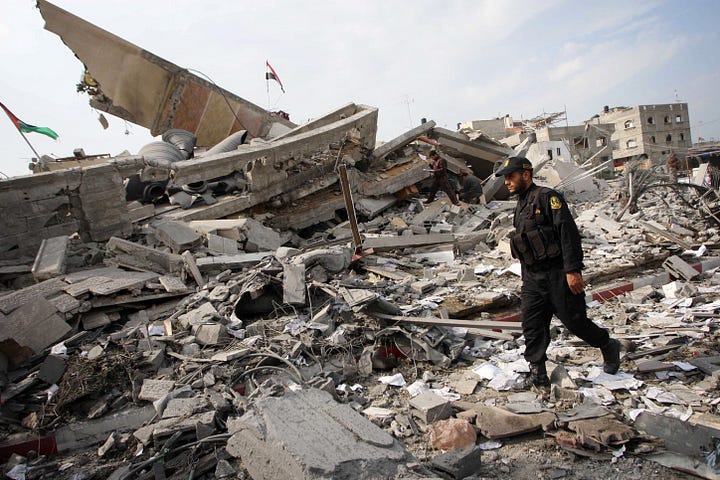
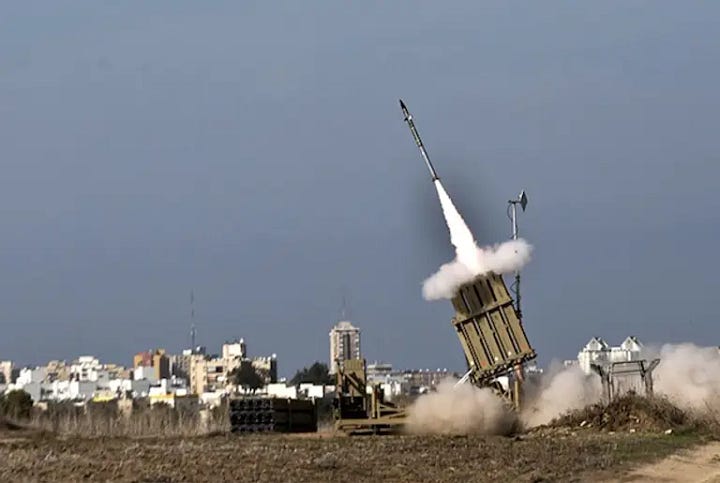

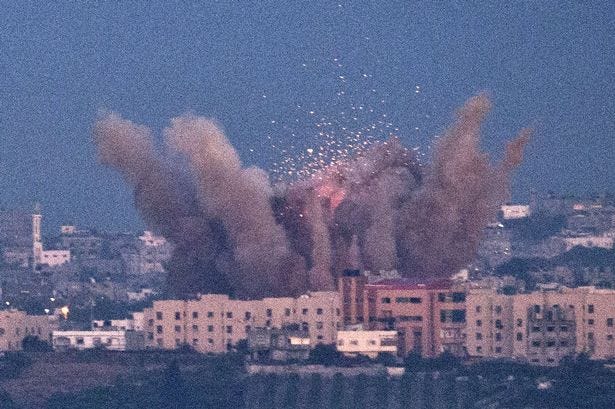
During the course of the operation, the IDF claimed to have struck more than 1,500 sites in the Gaza Strip, including rocket launch sites, weapon depots, and government facilities. Hamas and the Palestinian Islamic Jihad (PIJ) further intensified their rocket attacks on Israel. They called the rocket barrage Operation Stones of Baked Clay, firing over 1,456 rockets into Israel. The types of missiles used were Iranian-made Fajr-5, Russian-made Grad rockets and home-grown Qassam rockets. They attacked Rishon Lezion, Beersheba, Ashdod, Ashkelon and even Tel Aviv. By the end of the operation, six Israelis had been killed and two hundred forty were injured. 421 rockets were intercepted by Iron Dome and another 142 were misfires that fell on Gaza itself.
On November 20, Secretary of State Hillary Clinton arrived in Tel Aviv on a visit to Israel to promote a ceasefire initiative. She had talks with Israeli Prime Minister Benjamin Netanyahu. She did not meet with Hamas, because of their designation in the US as a terrorist organization. Egypt’s President Mohammed Morsi stated there would be a deal that day, however, talks failed and the violence continued.
On November 21, a bomb went off on a crowded bus in Tel Aviv, 28 people were injured in the attack. At Gaza's main hospital, sweet cakes were distributed in celebration. It was lauded from a Gaza mosque's loudspeakers and celebratory gunfire was heard when news of the bombing was reported. The attack was carried out on the 8th and last day of Operation Pillar of Defense, only a few hours before the ceasefire was reached.
Israel and Hamas, refused to deal with each other directly. Instead, negotiations were conducted thorough US and Egyptian intermediaries. On November 21, Egyptian Foreign Minister Mohamed Amr and Hillary Clinton announced a ceasefire that would take effect at 7:00 pm. Khaled Mashal thanked Egypt for mediating the ceasefire and claimed that Israel had been defeated. He also praised Iran for providing them with financing and arms. Benjamin Netanyahu declared Operation Pillar of Defense a success and thanked US President Obama for his "unwavering support for Israel's right to defend itself."
On December 8, Palestinian men, women and children flocked to Al-Katiba square in Gaza City despite the rains in the morning and gathered before a huge stage, wearing headbands and waving green flags in support of Hamas which has been controlling Gaza since 2007. At least 200,000 people attended the open-air rally, though Hamas said there were 500,000. Hamas officials said that at least 3,000 officials from Saudi Arabia, Lebanon, Egypt, Qatar, Bahrain, Kuwait, Turkey, Algeria, Indonesia, Mauritania, Tunisia, Libya and Jordan had arrived in the Gaza Strip especially for the event.
At the main stage in Gaza City, a roaring crowd greeted Hamas Prime Minister Ismail Haniyeh, who emerged from a door built into a large model of a Qassam rocket. Haniyeh delivered a speech in which he stated that Hamas was working toward establishing an Arab and Islamic strategy to liberate “all our occupied Palestinian territories.” He added that the group's “victory” in the eight-day conflict with Israel marked the beginning of the collapse of Israel.
Five hours after the start of the event, Khaled Mashal stood on a platform, behind a bank of white flowers. It has his first visit to Gaza since 1975, he gave a fiery speech to his supporters, stating among other things that. “Palestine is ours from the Jordan river to the Mediterranean Sea and from the south to the north. There will be no concession on an inch of the land. Gaza and the West Bank are two dear parts of the greater Palestinian homeland. We will never recognize the legitimacy of the Israeli occupation and therefore there is no legitimacy for Israel, no matter how long it will take.″ Mashal called this visit his third birth. "The first was my natural birth. The second was when I recovered from the poisoning. I ask God that my fourth birth will be the day we liberate all of Palestine."
Behind Mashaal was a large portrait of Hamas founder Ahmed Yassin. As he spoke, the crowd chanted slogans calling on Hamas’ military wing the Izz ad-Din al-Qassam Brigades, to fire more rockets into Israel and begged him to target Haifa this time.
2013 to 2014
On January 4, 2013, hundreds of thousands of people rally in Gaza in a show of unity between the governing Hamas, elected in 2006, and Fatah, in opposition since then.
On March 5, 2014, In Operation Full Disclosure, the Israeli military seizes the Klos C cargo vessel in the Red Sea. Israel says the weaponry found on board, including long-range rockets, was destined for militants in Gaza and had been sent by Iran.
On April 24, 2014, Hamas and Fatah – signed a reconciliation agreement in order to form a unity government. The two rivals split seven years ago following Hamas’ violent coup that wrested control of the Gaza Strip from Fatah and the PA.
On June 12, 2014, three Israeli teens are kidnapped and later found dead. Israeli officials believe Hamas is behind the abductions. The three murdered teens are Gilad Shaer, 16 (from Talmon), Naftali Frankel, 16 (from Nof Ayalon), and Eyal Yifrah, 19 (from Elad). Frankel was a dual Israeli-American citizen. Hamas officials denied involvement. Three months later, they announced that they had orchestrated the abduction and murder of the teenagers.
On July 8, 2014, in response to the kidnapping of the teens as well as the dramatically increasing fire coming from Hamas in the Gaza Strip, Israel launched Operation Protective Edge. Over the following 50 days, Israel fought to destroy the terror capabilities of Hamas by carrying out air strikes against Hamas leaders, locating and destroying tunnels dug by Hamas to infiltrate Israel. More than 2,000 Palestinians were killed, when Hamas relied on their typical tactics of using densely populated urban areas as their bases and provoking Israeli responses decimating the Gaza Strip. Throughout the conflict, Egypt functioned as a mediator in desperate attempts to end the violence, which resulted in multiple cease-fires being agreed to. However, on eleven occasions during supposed ceasefires Hamas violated the agreements by firing rockets and mortars into Israel. During Operation Protective Edge, the international community chastised Israel for strikes against Hamas that they deemed a disproportionate and unnecessary use of force. By violating the agreed-to ceasefires, Hamas showed no regard for the Palestinian citizens and showed that their vision is clouded by pure hatred for the Israeli “occupying force.” They deliberately put their citizens in danger to gain international sympathy for the Palestinian people when Israel is forced to retaliate.
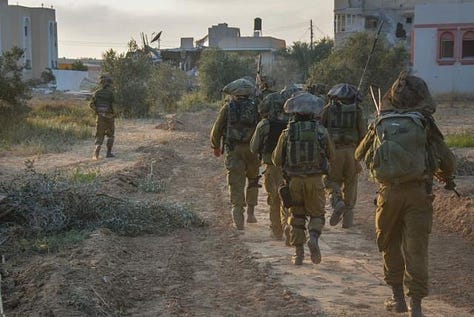
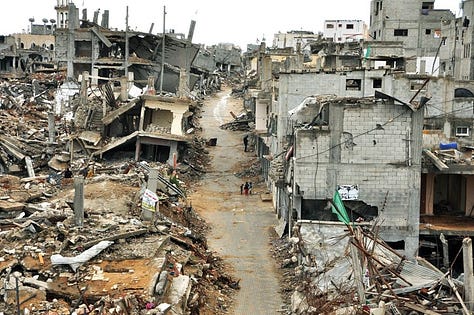
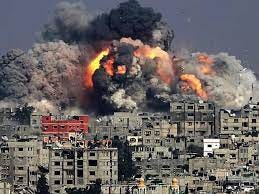
At the beginning of the conflict, Israel's stated goal was to destroy the military tunnels dug by Hamas into Israel, stop the endless rocket fire coming from the Gaza Strip, and bring to justice the individuals responsible for the abduction and murder of the teenagers. Israeli forces destroyed 32 terror tunnels dug by Hamas and conducted air strikes, resulting in the deaths of multiple Hamas leaders. On August 26, Hamas and Israel agreed to a ceasefire. Hamas members declared a glorious victory, and there was celebratory gunfire across Gaza. The plan that Hamas accepted was almost identical to the one Egypt had proposed two months prior. Hamas was forced to abandon its demands of a seaport, an airport, and an end to the Israeli blockade to reach an agreement. Hamas saw the outcome of Operation Protective Edge as beneficial for them because they stood their ground in the face of Israel and were successful in garnering international sympathy for the plight of the Palestinian people. Over the course of the conflict, 936 militants, 761 Palestinian civilians and 428 people who were not specifically identified as either group were killed and over 10,000 were wounded. 67 IDF soldiers and six Israeli civilians were killed, 469 soldiers and 87 civilians were wounded. 3,356 rockets were fired at Israel by Hamas, 578 were intercepted by Iron Dome.
On September 25, 2014, Hamas spokesperson Mahmoud al-Zahr stated “we don’t want to establish an Islamic emirate in Gaza; we want an Islamic state in all Palestine.” The goal of Hamas is to destroy the Jewish people and the Jewish homeland and, in this quote, Al-Zahar makes it clear that Hamas is in no way interested in peace, it is only interested in the suffering and destruction of the people of Israel.
Following Operation Protective Edge, Hamas returned immediately to weapons production, tunneling efforts and propaganda. Although the organization was cash-poor, they managed to revive its weapons industry, conducting multiple rocket tests in the Mediterranean and beginning the reconstruction of terror tunnels into Israel. The Izz al-Din al-Qassam Brigades staged a military parade through the streets of Gaza on October 9, the same day that the newly formed Palestinian Unity government met for the first time in Gaza. This parade was part of a recruitment drive by Hamas to drum up more support for the military units.
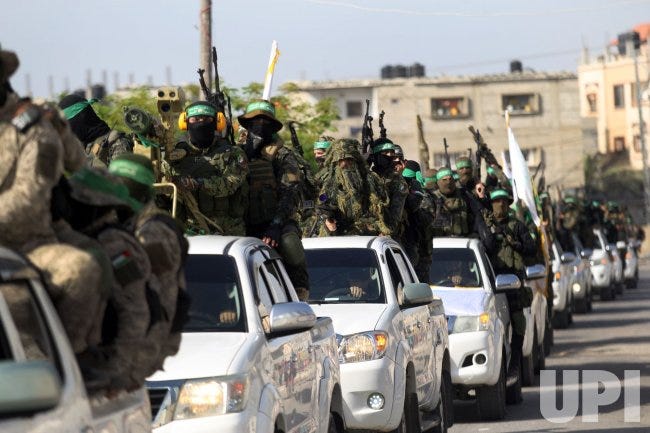
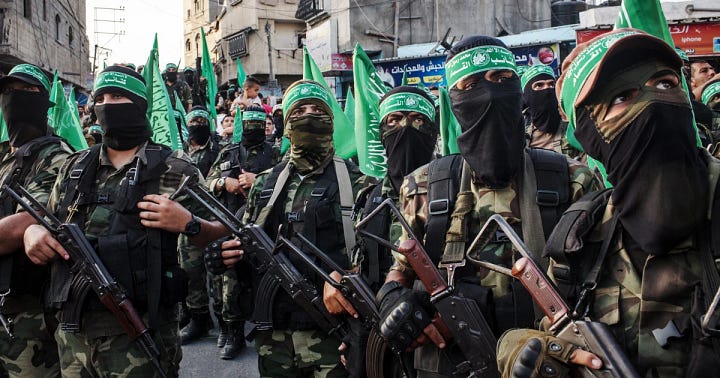
On October 23, 2014, Hamas conducted multiple rocket tests over the Mediterranean Sea. This was the sixth incident of Hamas test-firing rockets since the end of Operation Protective Edge.
On October 1, 2014, for the first time in a year, some 24,000 employees of the former Hamas government in the Gaza Strip received their $1,200 salaries. The money for the wages was donated by Qatar, which gave the unity government $30 million to pay the workers.
On December 17, 2014, the European Union removed Hamas from a designated terror organization blacklist. The ruling, handed down by the General Court of the European Union, stated that Hamas’ designation as a terrorist organization by the EU in 2001 was “ not based on acts examined and confirmed in decisions of competent authorities” but instead based on “factual imputations derived from the press and the internet.” This ruling was brought about after Hamas officials contested their designation on the list of terrorist organizations. Despite this ruling removing the designation, the court ruled that the effects of this designation would stay in place for at least three months, including the freezing of funds.
On December 24, 2014, it was reported by local news agencies that Hamas had begun building new fighting positions and fortifying its bases of operations. Residents of the Gaza Strip reported seeing dirt mounts, ramps, and other fortifications being built and moved by members dressed in Hamas military garb. Hamas members then raised flags over their new positions. While Hamas funnels millions of dollars meant for humanitarian aid into terrorist projects, the situation of the civilians living in the Palestinian territory worsens by the day.
Although groups like Hamas and Fatah denied it, the Islamic State began to gain a foothold in the Palestinian territories. Israeli security sources claim that in late 2014 and early 2015, hundreds of Hamas and Fatah supporters defected to the Islamic State. Following the attack on the satirical French news magazine Charlie Hebdo in January 2015, thousands of supporters of the Islamic State crowded the streets of Gaza in protest of the publishing of images of Mohammed by the magazine and in support of the violent attack that left twelve people dead. Similar demonstrations took place in Ramallah and Hebron. These protestors attempted to storm the office of the French Cultural Center in Gaza and burned French flags while chanting calls for the slaughter of French nationals. Palestinian security forces arrested seven Islamic State supporters. On January 18, 2015, it was revealed that several would-be jihadists “training” to join the Islamic State had been arrested in November and December in Galilee. Israeli security forces apprehended the seven Arab Israeli citizens after participating in “training” sessions where they slaughtered sheep, practiced riding horses, learned how to make and hurl a Molotov cocktail properly, and participated in target shooting activities. The individuals arrested included Adnan Ala al-Din, a 40-year-old prominent lawyer from Nazareth, Ala al-Din presented himself to the security forces as the Senior Commander of the Islamic State in Palestine at his arrest.
Next week I will be covering the busy years of 2015 to 2016. I hope you are learning a few things from these articles and as I always say, please share them with as many people as you can. Israel is still subject to nearly overwhelming international pressure and every little thing we can do to set the story straight is helpful.
Chris

